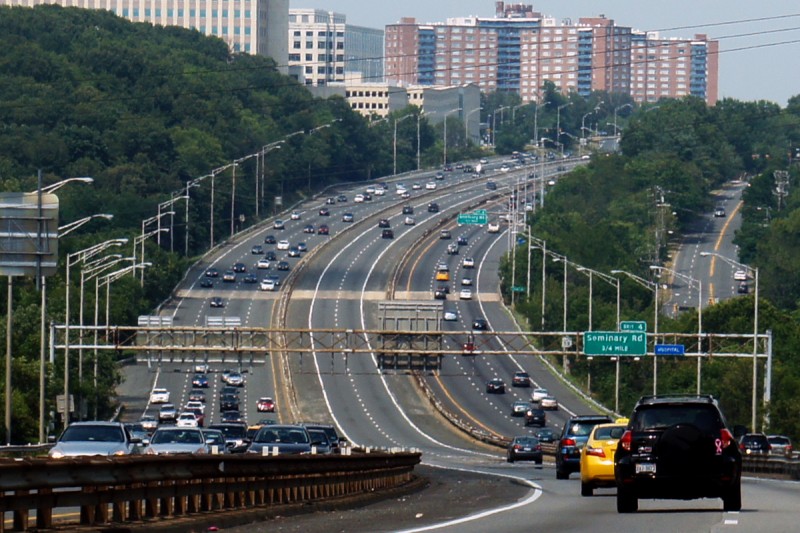
Sometimes, perhaps most of the time, we take for granted the generations of innovation, discovery and industry that prop up the ease and convenience of our daily lives. We get in the car each day without thinking about Henry Ford. We merge onto the interstate without thinking about Dwight Eisenhower or the huge undertaking of building a national highway system.
Instead we tend to focus on the remaining inconveniences and inefficiencies, not the really incredible accomplishment. Well, the commuter or HOV lane is one of those things– or it could be, it is in many places, cutting down travel times by huge fractions, but it is not in Tennessee. Yet, at least.
In Tennessee, since 1993, the state version of the High Occupancy Vehicle lanes (aka HOV lane) was first seen on major highways into and out of Memphis and Nashville.
But in general they got their start in the late 1960s, with a slow progress until the mid-80s when a change in federal policy caused a major expansion nationwide. The purpose of the lanes was to cut down on traffic congestion and increase air quality.
The first freeway HOV lane in the United States was implemented on the Henry G. Shirley Memorial Highway in Northern Virginia, between Washington, D.C., and the Capital Beltway, and was opened in 1969 as a bus-only lane. It is pictured above as it looks today.
In December of 1973, it was opened to carpoolers with at least four occupants. Today, average travel time in this original HOV facility is 29 minutes, and it takes 64 minutes in the general traffic lanes along the 30-mile lane. That time incentive is the core value of an HOV lane.
The second freeway HOV facility was the bus lane on the Lincoln Tunnel Approach and Helix in Hudson County, New Jersey, opened in 1970. Today, according to the Federal Highway Administration (FHWA), it is the most-used HOV lane in the country, with more than 85,000 passengers per day.
Originally most HOV lanes require at least 3 passengers and today many still do.
In the 1980s, a push began for HOV lanes as a way to improve air quality by reducing smog emissions.
A major change came in October, 1990 when a memorandum from the FHWA administrator stated that the “FHWA strongly supports the objective of HOV preferential facilities and encourages the proper application of HOV technology.”
From there, across the country the FHWA began to encourage the building of HOV lanes. Also in the early 1990s, the Clean Air Act Amendments included encouragement of HOV lanes expansions. Before many of the area’s recent growth, as recently as 2004, Nashville had the worst air-quality in the country.
Another act, the Intermodal Surface Transportation Efficiency Act (ISTEA) of 1991 used funding mechanisms to increase the construction of HOV lanes. The ISTEA provided that under the Interstate Maintenance Program, only HOV projects would receive 90% federal fund matching. This is when HOV lanes were defined as 2 or more passengers by the Federal government.
Tennessee, of course, built its first lanes in 1993.
Today, HOV lanes are still being built in Tennessee. It is important to note that the HOV lanes we enjoy are “regular access lanes” for 22 hours each day, with restricted access only in the direction of flow, and only at rush hour.
In the state’s list of 2011-2035 Cost-Feasible Projects, a number of researched and approved projects in the pipeline include HOV lanes or expanding their use.
Ten projects call for adding highway lanes and an additional HOV lane (from 1 lane to 2 lanes)- such as on I-40 East of Nashville, I-65 North near Nashville, I-40 near Memphis, and interchanges such as I-65 and 11th Ave, I-40 and 12th, I-24 and Shelby Ave, and I-65 to 1st street, Nashville. Four projects call to add a ramp to connect highways from the HOV to avoid crossing traffic to exit/enter freeways.
With Middle Tennessee’s population set to break 3 million people– bigger than Seattle or Denver– by 2040, traffic congestion will only get worse. In fact, even if TDOT completes all the projects on its 2040 plan, they admit these expansions will not keep par with growth. But the path to a solution is already laid out, in part, in commuter lanes in Tennessee. It will take initiative from the top, like with the national highway system, and innovation, like that of the Model T, but it will also take a change in all of our behavior. The road is there, it just has to be taken.
Please join our FREE Newsletter


















